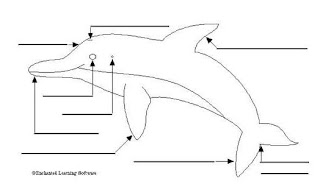The marks that distinguish one bird from another are called field marks. These include colors and markings such as breast spots, wing bars (thin lines along the wings), eye rings (circles around the eyes), eyebrows (lines over the eyes), eye lines (lines through the eyes) and many others.
Below, you'll find a glossary of definitions for the parts of a bird.
Upper Mandible: The upper portion of a bird's bill.
Lower Mandible: The lower portion of a bird's bill.
Lore: Region between the eye and the bill on the side of a bird's head.
Crown: The top of the head.
Nape: The back of the neck.
Wing Coverts: The feathers on the leading edge of the wing; they cover the bases of the primary and secondary feathers.
Primary Feathers: Longest and narrowest of the flight feathers; located on the outermost edges of the wing; they can be individually rotated; responsible for forward movement in flight.
Tail Feathers: Flight feathers located on the tail which help a bird steer or stop.
Underparts: The underside of a bird, from wing to wing.
Breast: The area just below the front part of the neck; often a spot where there are unique color markings.
Eyering: Circle of feathers around the eye that are a different color from the rest of the face.







